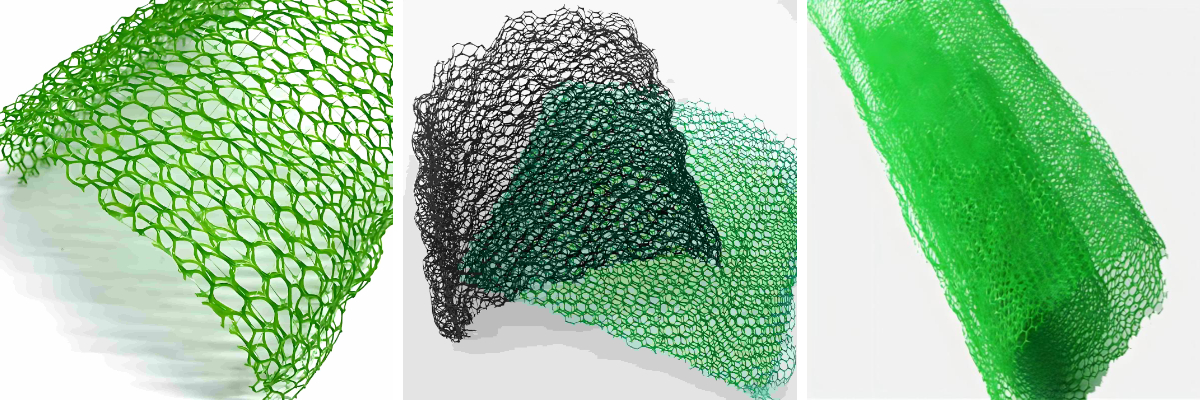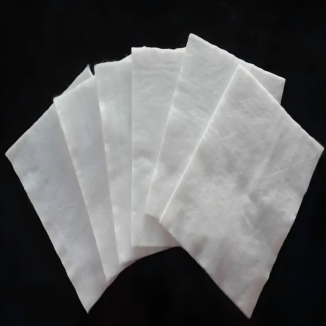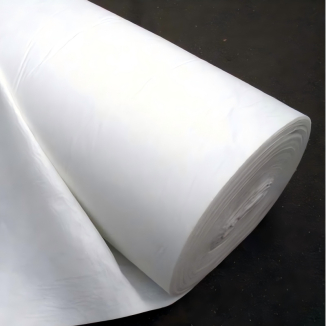How to Choose 3D Vegetation Nets Based on Their Specifications
In slope protection, soil erosion control, and ecological restoration projects, 3D vegetation nets (also regarded as 3D geonets) have end up imperative materials. Unlike typical flat geotextiles, these third-dimensional constructions grant greater soil retention, promote vegetation growth, and enhance slope stability. However, deciding on the proper 3D vegetation internet requires a deep perception of 3D vegetation internet specifications—as mismatched specs can lead to bad performance, expanded upkeep costs, or even venture failure. This information breaks down the key specs to consider, step-by-step resolution methods, and real-world functions like Geomat for Slope Protection, supporting you make knowledgeable selections for your project.
Why 3D Vegetation Net Specifications Matter for Project Success
Before diving into specs, it’s fundamental to apprehend why they’re non-negotiable. 3D vegetation nets are designed to tackle particular venture challenges: steep slopes want greater tensile strength, whilst moist areas require higher water permeability. 3D vegetation internet specs at once dictate how nicely the internet can stand up to environmental stress, aid plant growth, and combine with surrounding soil.
For example, a Geomat for Slope Protection on a 45-degree motorway slope desires unique specs than one used for a mild residential outdoor slope. Choosing a internet with inadequate thickness may lead to tearing below soil pressure, whilst bad porosity should drown seeds and prevent vegetation establishment. Additionally, 3D geonet merchandise fluctuate in material, structure, and durability—all outlined in their specifications—making it crucial to align these elements with your project’s special needs.
Key 3D Vegetation Net Specifications to Evaluate
When evaluating 3D vegetation nets, center of attention on these core specs to make sure compatibility with your project:
1. Material Composition
The base fabric of a 3D geonet determines its durability, chemical resistance, and environmental adaptability. Common substances include:
Polypropylene (PP): Cost-effective, lightweight, and resistant to UV radiation and most chemicals. Ideal for widespread slope safety and brief tasks (e.g., building website online erosion control).
Polyester (PET): Offers greater tensile electricity and warmth resistance than PP. Suitable for long-term tasks like Geomat for Slope Protection in high-temperature areas or areas with heavy soil loads.
Biodegradable Polymers: Eco-friendly choice for restoration initiatives (e.g., wetland recovery). Breaks down over time as vegetation matures, decreasing long-term environmental impact.
Always take a look at fabric specs to make sure the internet can stand up to nearby conditions—for instance, coastal initiatives want saltwater-resistant materials, whilst industrial web sites require chemical tolerance.
2. Thickness and Height
3D vegetation internet specs for thickness (typically 5–20mm) and top (20–100mm) at once affect soil retention and seed coverage.
Thickness: Thicker nets (10mm+) supply higher resistance to punctures from rocks or debris, making them appropriate for rocky slopes or high-traffic areas. Thinner nets (5–8mm) work for mild slopes with first-rate soil.
Height: The 3D structure’s peak creates pockets to maintain soil, seeds, and water. Taller nets (50mm+) are perfect for steep slopes (3:1 or steeper) as they entice extra soil and forestall runoff. Shorter nets (20–30mm) suffice for mild gradients or areas with mild rainfall.
For example, a Geomat for Slope Protection on a mountain motorway (steep slope, heavy rain) would want a top of 60mm+ to keep soil effectively, whilst a residential garden slope should use a 30mm net.
3. Tensile Strength and Elongation
Tensile energy (measured in kN/m) refers to the net’s capability to face up to pulling forces, a essential spec for 3D geonet stability. Elongation (percentage of stretch earlier than breaking) shows flexibility:
High Tensile Strength (≥10 kN/m): Required for steep slopes, heavy backfill, or areas inclined to landslides. Prevents the internet from tearing underneath soil pressure.
Low Elongation (≤15%): Ensures the internet continues its form except stretching, retaining soil and seeds in place. High elongation (≥20%) is solely appropriate for transient initiatives the place flexibility is prioritized.
When choosing a Geomat for Slope Protection, verify tensile electricity specs in shape the slope’s load—for example, a 2:1 slope desires a internet with 12 kN/m+ power to keep away from sagging.
4. Porosity and Water Permeability
Porosity (percentage of open space) and permeability (water glide rate, measured in L/m²·s) decide how properly the internet drains water whilst keeping soil:
Porosity (≥70%): Ensures water can drain freely, stopping waterlogging that kills seeds or weakens soil. High porosity is indispensable for wet areas or initiatives with negative soil drainage.
Permeability (≥5 L/m²·s): Fast water drift reduces hydrostatic stress in the back of the net, defending slope integrity. For Geomat for Slope Protection in flood-prone areas, intention for permeability specs of eight L/m²·s or higher.
Avoid nets with low porosity—they lure water, main to soil erosion and internet deterioration over time.
Step-by-Step Guide to Choosing 3D Vegetation Nets
Follow this manner to align 3D vegetation internet specs with your project’s needs:
Step 1: Assess Project Conditions
Start with the aid of documenting key web site factors:
Slope Steepness: Measure gradient (e.g., 3:1, 2:1) to decide required peak and tensile strength.
Soil Type: Sandy soil desires greater porosity to keep away from drainage issues; clay soil requires nets that stop satisfactory particle loss.
Climate: UV exposure, rainfall, and temperature extremes affect cloth desire (e.g., PP for UV resistance, PET for heat).
Project Duration: Temporary tasks (6–12 months) can use lower-cost PP nets; long-term (5+ years) want PET or biodegradable options.
For example, a Geomat for Slope Protection in a sunny, wet coastal vicinity would want a UV-resistant, high-permeability PET net.
Step 2: Match Specs to Project Goals
Define your important goals (e.g., erosion control, vegetation growth, slope stabilization) and choose specs accordingly:
Erosion Control: Prioritize excessive porosity, thickness, and soil retention (taller height).
Vegetation Growth: Choose nets with giant adequate pores for seed germination and root penetration (porosity ≥75%).
Slope Stabilization: Focus on tensile electricity (≥10 kN/m) and low elongation to withstand soil movement.
Step 3: Verify Compliance with Standards
Reputable 3D geonet producers supply specs that meet enterprise requirements (e.g., ISO 10318 for geosynthetics). Check for certifications to make sure quality:
UV resistance trying out (ASTM D4355) for outside projects.
Tensile power checking out (ASTM D6241) to verify load-bearing capacity.
Environmental security (e.g., no poisonous additives) for eco-sensitive areas.
Avoid nets with indistinct or untested 3D vegetation internet specifications—they pose dangers to mission performance.
Real-World Applications: 3D Vegetation Nets in Action
Understanding how specs translate to actual initiatives helps refine your selection. Below are frequent use instances offering Geomat for Slope Protection and 3D geonet products:
1. Highway Slope Protection
Project: 3-mile dual carriageway slope (2:1 gradient) in Colorado, USA, susceptible to snowmelt and rainfall erosion.
Specs Chosen: PET 3D geonet (thickness 12mm, peak 60mm, tensile electricity 15 kN/m, porosity 80%).
Why: PET resists intense temperature changes; tall peak traps soil throughout snowmelt; excessive porosity drains extra water.
Result: Erosion decreased via 92% inside 6 months; native grasses mounted shortly via the net’s pores.
2. Residential Landscaping Slope
Project: Gentle 4:1 slope in a suburban outside (California) wanting erosion manage and grass growth.
Specs Chosen: PP 3D vegetation internet (thickness 8mm, peak 30mm, porosity 75%).
Why: PP is reasonably-priced for small projects; shorter peak fits mild slopes; excessive porosity helps grass seed germination.
Result: No soil runoff after heavy rains; grass utterly set up in eight weeks.
3. Mine Site Restoration
Project: Steep 1.5:1 slope at a closed mine (Pennsylvania) requiring long-term stabilization and vegetation.
Specs Chosen: Biodegradable 3D geonet (thickness 15mm, top 70mm, tensile energy 12 kN/m).
Why: Biodegradable fabric aligns with eco-restoration goals; tall peak and excessive power stop slope cave in for the duration of restoration.
Result: After three years, the internet decomposed naturally; native vegetation stabilized the slope permanently.
Common Mistakes to Avoid When Choosing 3D Vegetation Nets
Steer clear of these mistakes to make certain your 3D geonet resolution succeeds:
Ignoring Slope Steepness: Using a short, low-strength internet on a steep slope leads to tearing and erosion.
Overlooking Climate: PP nets degrade shortly in severe heat—opt for PET in high-temperature regions.
Vague Specs: Choosing nets except clear 3D vegetation internet specs (e.g., “high strength” besides numbers) dangers negative performance.
Conclusion: Choose 3D Vegetation Nets Wisely for Long-Term Success
Selecting the proper 3D vegetation internet boils down to aligning 3D vegetation internet specs with your project’s conditions, goals, and standards. By evaluating material, thickness, tensile strength, porosity, and real-world purposes like Geomat for Slope Protection, you make certain the internet promises on erosion control, vegetation growth, and slope stabilization.
Remember: a well-chosen 3D geonet isn’t simply a material—it’s an funding in your project’s sturdiness and environmental impact. Whether you’re a contractor, landscaper, or homeowner, taking the time to confirm specs will shop costs, limit maintenance, and make sure long-term success.
Contact Us
Company Name: Shandong Chuangwei New Materials Co., LTD
Contact Person :Jaden Sylvan
Contact Number :+86 19305485668
WhatsApp:+86 19305485668
Enterprise Email: cggeosynthetics@gmail.com
Enterprise Address: Entrepreneurship Park, Dayue District, Tai 'an City,
Shandong Province









